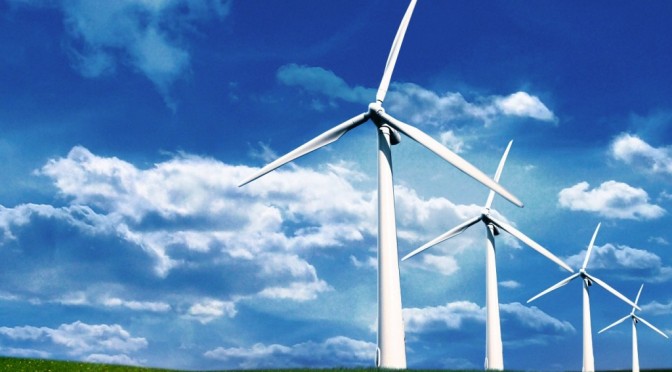Wind energy could soon supply 5 GW annually to fight chronic power shortages in the country, according to the India Wind Energy Outlook, prepared by WISE, IWTMA and GWEC.
Officially released at the opening of Wind Power India 2012 by the Hon. Minister of New and Renewable energy Farooq Abdullah, the report examines the state of the Indian wind power industry, and finds that up to 89 GW of wind power could be installed by 2020, up from current 18 GW.
This would attract around $16.5 billion of annual investment to the sector, create 179,000 new jobs and save 179 tons of CO2 annually. By 2030, the installed capacity could reach as much as 191 GW.
“India’s wind power sector has a mature manufacturing industry, and enormous growth potential. Now we need to get the right policies in place both nationally and at state level for India to meet its target of 15% renewable electricity supply by 2020,” said Steve Sawyer, GWEC’s Secretary General.
“Power shortages and energy security are both critical issues for India’s rapidly growing economy. Wind is already cost-competitive with heavily subsidized fossil fuel based energy in several Indian states, and its competitive position will only improve over time,” continued Sawyer. “But we need effective national energy policy, coordination with states, investments in the grid and policy stability for wind power to fulfil its potential in India.”
India was the third largest wind power market in 2011, China and US, and fifth in overall cumulative installed capacity. The Indian Wind Energy Outlook provides an in-depth analyses of the current status of wind power development in India, assesses the potential for future growth and pinpoints the remaining obstacles which need to be overcome to fully benefit from the rich wind resource in the country. The report shows that India’s potential for wind power development reaches up to 400 GW, and more if the potential of offshore wind and repowering are fully exploited.
The World Institute of Sustainable Energy (WISE) is a not-for-profit institute committed to the cause of promoting sustainable energy and sustainable development, with specific emphasis on issues related to renewable energy, energy security and climate change. Since its inception in 2004, WISE has pioneered many important initiatives. Some of these include, piloting a model Renewable Energy Law for India, proposing a roadmap for generation-based incentives (GBI) for wind and solar power, developing state-level action plans for clean energy technologies, etc.
See www.wisein.orgfor more information.
The Indian Wind Turbine Manufacturers’ Association (IWTMA) is the only body representing the country’s wind turbine manufacturers, providing a single contact point for policy makers, regulators and utilities at the national and state level. IWTMA’s main objective is to promote wind energy in India, facilitate the extension of knowledge in the field and interact with national and global energy bodies. IWTMA is a founding member of the Global Wind Energy Council (GWEC) alongside other national and regional associations.
See www.indianwindpower.com for more information.
Global Wind Energy Council (GWEC) is a member-based organisation that represents the entire wind energy sector. The members of GWEC represent over 1,500 companies, organisations and institutions in more than 70 countries, including manufacturers, developers, component suppliers, research institutes, national wind and renewables associations, electricity providers, finance and insurance companies.
GWEC works at the highest international political level to create a better policy environment for wind power. GWEC and its members are active all over the world, educating local and national governments and international agencies about the benefits of wind power.
Working with the UNFCCC, the IEA, international financial institutions, the IPCC and the International Renewable Energy Agency (IRENA), GWEC represents the global wind industry to show how far we’ve come, but also to advocate new policies to help wind power reach its full potential in as wide a variety of markets as possible.
See www.gwec.net for more information.
Download full report: India Wind Energy Outlook 2012


